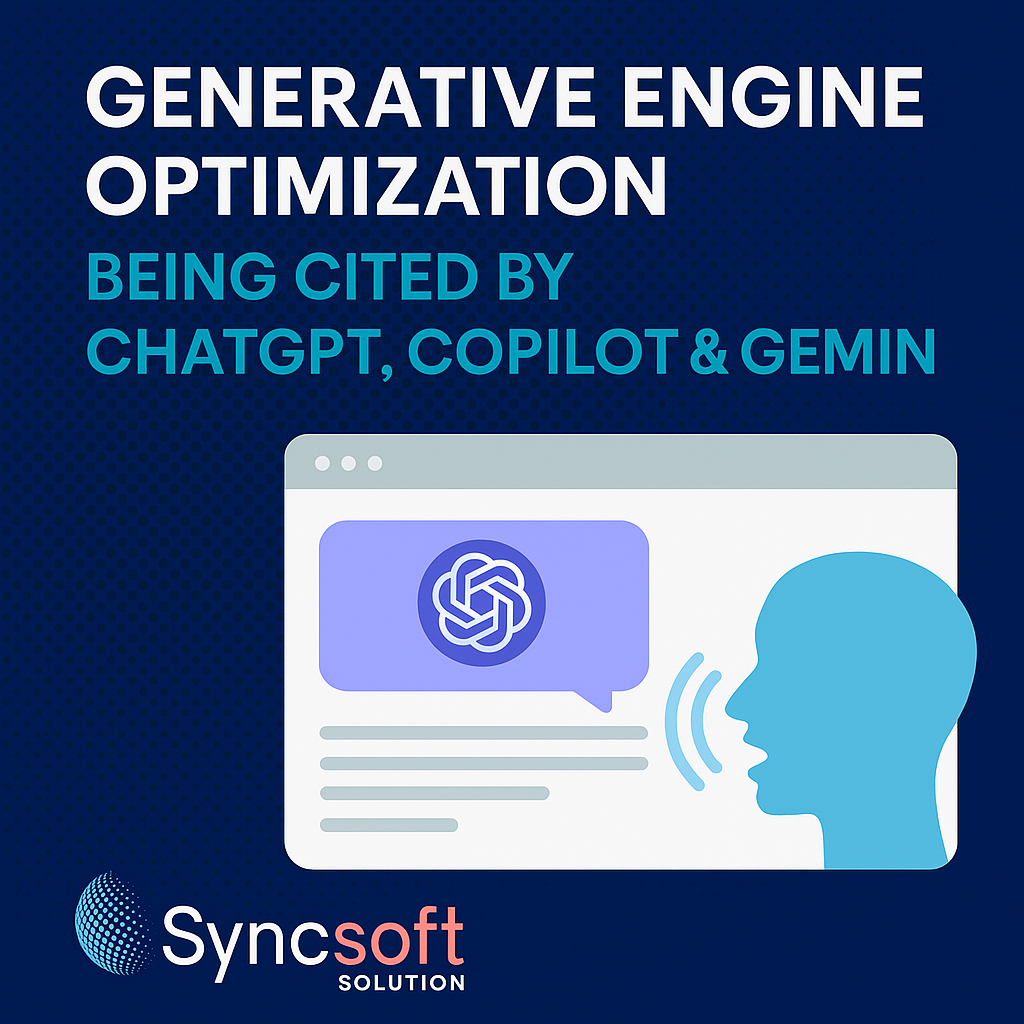Generative Engine Optimization (GEO): Being Cited by ChatGPT, Copilot & Gemini
Generative Engine Optimization– Large Language Models (LLMs) like OpenAI’s GPT‑4o and Google’s Gemini absorb data from web crawls, licensed sets and user prompts. If your insights, stats and brand story live behind paywalls or PDFs, the models cannot cite you. GEO is about making the right version of your content easy for LLMs to ingest, attribute and surface in answers. This guide covers data packaging, licensing, EEAT upgrades and monitoring citations.
1. How LLMs Discover Content
LLMs rely on CommonCrawl, Graphcast, and direct browsing tools. Ensure canonical tags, open robots, and alt hostnames ( raw.syncsoftsolution.com) for lightweight HTML dumps.
2. Packaging Knowledge Assets
- HTML Lite: stripped CSS, inline images under 30 KB.
- JSON Datasets: Self‑describe columns; license under CC‑BY 4.0.
- APIs: Rate‑limited GET endpoints returning entity triples.

3. Licensing & Attribution (Generative Engine Optimization (GEO))
LLMs avoid content with “no AI” policies. Declare permissive use but require citation via <meta name='citation' content='Sync Soft Solution'/>.
4. Reputation Building & EEAT for LLMs (Generative Engine Optimization (GEO))
Publish whitepapers on Figshare with DOI, secure citations on .gov or .edu sites, and maintain consistent author profiles across ORCID and LinkedIn.
5. Monitoring & Alerts
Set up Perplexity Alerts for “source:syncsoftsolution.com”. Use GPT‑Bot log analysis to see crawl frequency.
6. Future‑Proofing
Adopt Schema.org Dataset, SoftwareSourceCode, and CreativeWorkSeries to anticipate knowledge graph expansions.
Final Thought
GEO positions your brand into the neural core of modern information engines. Start exposing clean, licence‑friendly datasets today and ride the citation wave tomorrow. Sync Soft Solution can blueprint and execute your GEO roadmap end to end.
